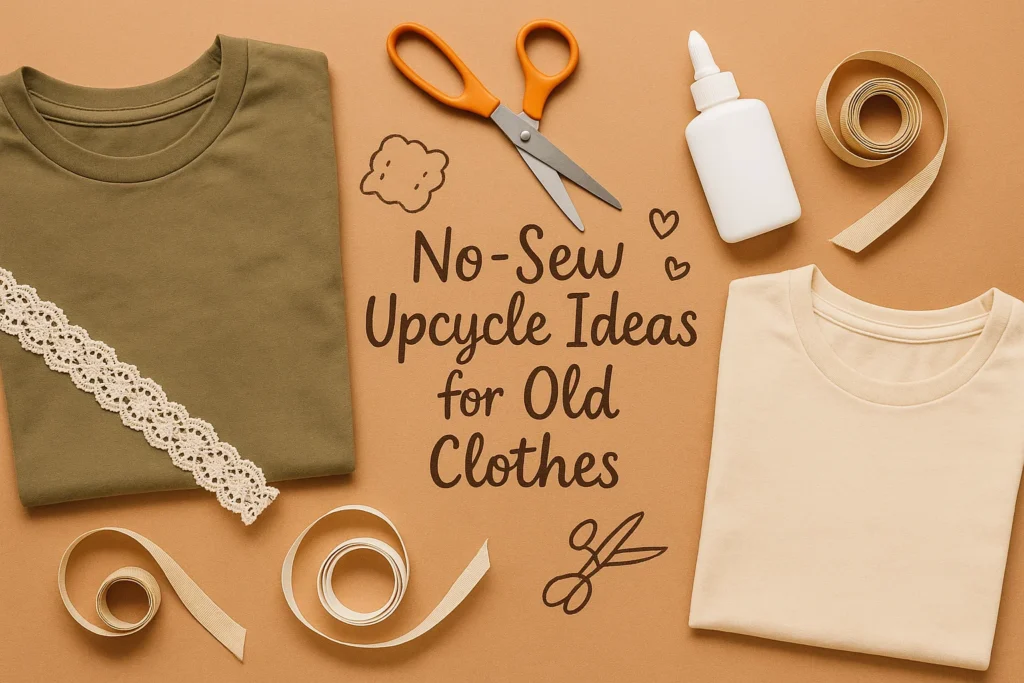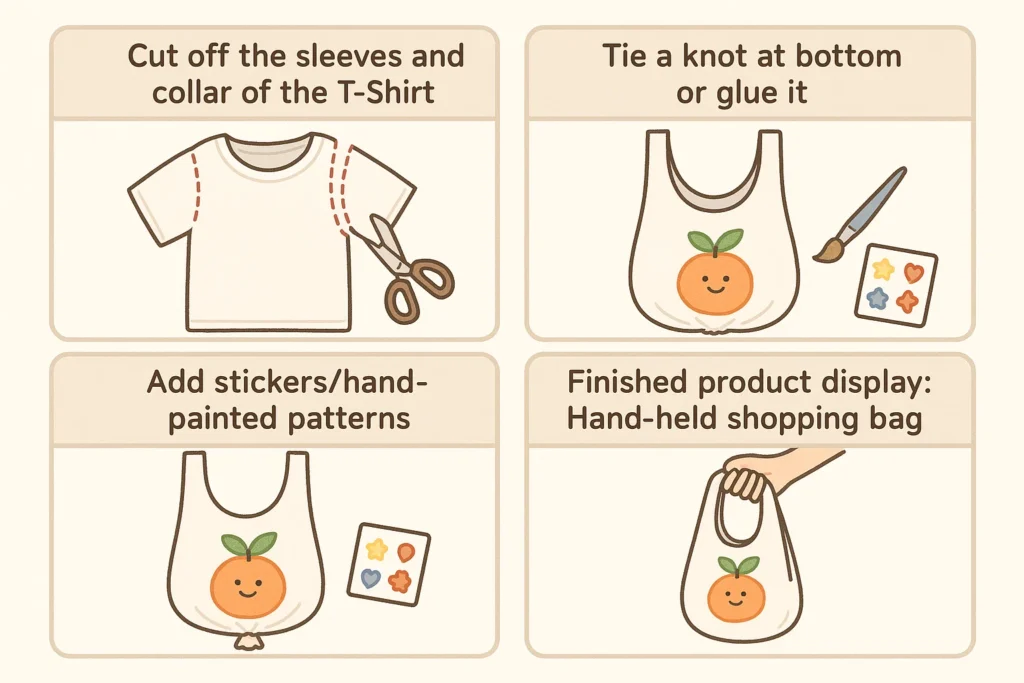In this fast fashion and trend change world, the situation makes it easy to leave the accumulation of clothes behind and make them useless that way. However, we can take an alternative step before you dispose of them: recycling an outfit is not only a sustainable but also a cost-efficient and challenging yet enjoyable way of updating your clothes. By not only recycling textile waste, but also doing it without a sewing machine, you can show your creative power to the fullest. Are you looking for some new ideas or are you a needlework enthusiast? Do not miss out on the following list of 10 very innovative and no-sew tips for upcycling your wardrobe.

Why Upcycle Rather than Throw Away?
Upcycling is a process in which we take old or unnecessary products and transmute them into something new and useful, quite often we also inject a personal touch in our work. Unlike recycling which has the goal of getting the material into tiny pieces and then forming something, upcycling always starts with taking away what is not needed and thus adds aesthetic and material value. Here is a list of arguments to support the idea of upcycling:
- Environmental Benefits: The fashion industry is one of the main contributors to environmental pollution. Upcycling reduces textile waste and carbon footprint, thus, protective from pollution.
- Save Money: DIY transformations cost less than buying new clothes.
- Personal Style: Create unique pieces reflecting your fashion taste.
- Fun & Fulfilling: Making handcrafted things lowers your stress and lets you indulge in hands-on tasks and the pleasure of accomplishing a beautiful product.
10 No-Sew Upcycling Ideas You’ll Love
1. Turn Old T-Shirts into Tote Bags
Cut off the sleeves and the neckline of a t-shirt, simply put a knot or use some glue to fix the bottom, and your beautiful reusable shopping bag is ready. You can also add some paint or patches to customize the bag.
2. Cut Jeans into Trendy Shorts
Get a pair of jeans that you no longer need and your pair of scissors ready. With the scissors, you can snip your jeans and don’t forget to roll back the hems. Iron-on patchworks, lace trims, or frayed edges can be added for your do-it-yourself (DIY) streetwear look.
3. Tie-Dye Old Tees for a Fresh Look
Use fruit and vegetable dyes or buy some dye to create artistic lines on your pale t-shirts. Using the spiral, crumpling, or striping approach, an ordinary T-shirt can become a statement piece.
4. Make Lounge Sets from Oversized Clothes
Choose the largest sweatshirt and the most comfortable pajamas to make a pair of relaxing at-home sets. The top can be cut short, the sleeves can be adjusted, and the lower part can be altered as well, and all this can be done without sewing.
5. Convert Button-Down Shirts into Off-Shoulder Tops
A button-down shirt can serve a different purpose if you play with it a bit. By folding the collar and tying the hem, you will have a great option for summer.
6. Craft Pillowcases or Mug Cozies from Sweaters
Select a sweater and then cut the rectangular pieces out. Once you have these, you can use fabric glue to give them a suitable shape for a mug sleeve or to slip them over a cushion thus making a pillowcase. These are good for seasonal decoration too!
7. Create Wall Art or Patches with Bold Prints
Let your appreciated old clothes be another avenue to add wall art or patchwork. Take after gear or drawings and pick the most eye-catching patterns to cut out.
8. Make Headbands and Scrunchies
Pretty fabric that you might have laying around can be used to knot or weave it into a friendly-cute head band. As for the essential scrunchies, the ones made by simply gluing the bands of the fabric can be a great replacement for the sewn ones.
9. Patchwork Fashion Projects
First of all, the fabrics of different patterns and material should be cut into squares or rectangles. Then, after position them onto your tote bag or hoodie, using an iron or glue will make them stay and give you a refreshing look.
10. DIY T-Shirt Rugs or Mats
Make circular or rectangular rugs by weaving old T-shirt strips. A great group activity that students can engage in knotting or braiding the fabric —

Preparing Clothes for Upcycling
If you are planning to start with upcycling, have a look at the following steps.
- Wash and Dry: Always start with clean clothes.
- Inspect for Damage: Holes and tears can inspire new ideas or signal unusable material.
- Sort by Fabric Type: Cotton works well for tie-dye; denim for sturdy projects; knits for cozy accessories.
Basic Tools You May Need:
- Fabric glue or hot glue gun
- Scissors
- Pins or clips
- Chalk or markers for outlining
- Decorative materials (buttons, lace, patches)
Style Inspiration: Trends on TikTok & Pinterest
Social media is the first place you should check to get ideas for upcycling. #UpcycleFashion and #NoSewDIY lines on Twitter have been filled with pictures of the process of turning something old into something new.
- TikTok Trends: Challenge yourself with the “1 Shirt 3 Ways” challenge or recreate something from the thrift store.
- Pinterest Boards: Search for “no-sew clothing DIY” to discover creative layouts and ideas.
- Instagram Creators: Follow fashion upcyclers who post short tutorials and style guides.

Upcycle or Donate: How to Decide
DIY can’t save every article from being given away. We have ways to decide whether to upcycle or to give away:
- Upcycle if the fabric is intact, the size is oversized (good for alteration), or the print is interesting.
- Donate if the item can still be worn and can be useful for other people.
- Recycle if the item is beyond repairs and cannot be reused or worn.
Final Thoughts: Sustainable Style Starts at Home
Upcycling is not merely a trendy pastime: it represents the shift from the consumerist lifestyle to awareness. By just being a little imaginative, your old clothes can be turned into new ones that can show your uniqueness and minimize waste.
Whether it is part of saving money, becoming more eco-friendly or just adding some sparkle to your imagination, the journey of sustainable fashion starts one piece of clothing at a time.
Therefore, next time you decide to throw away that same old t-shirt — ask yourself: what other great things can I do with it?